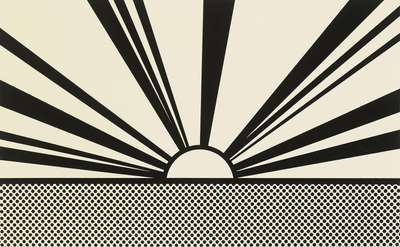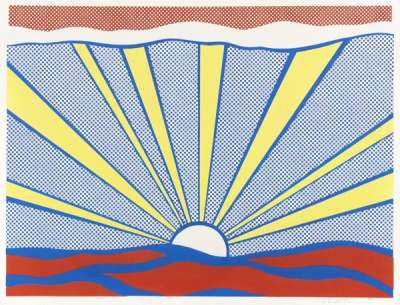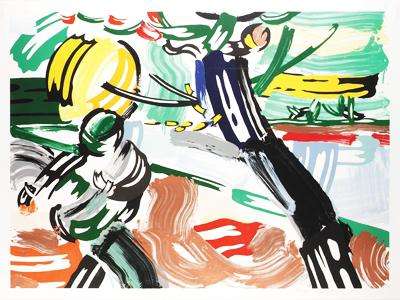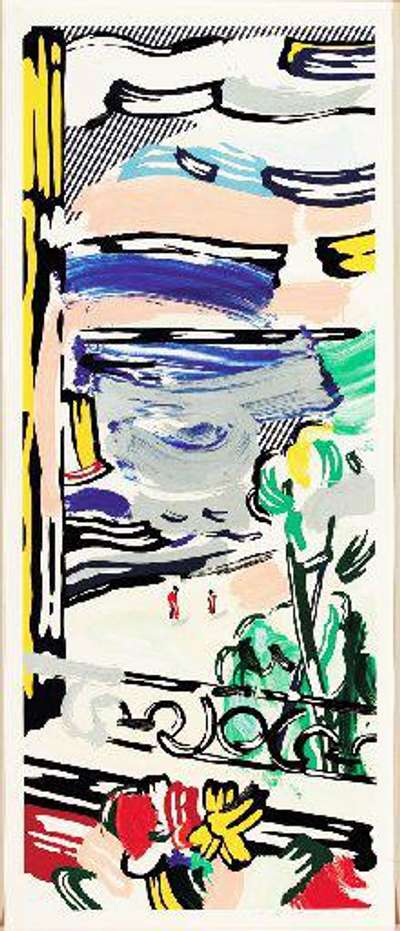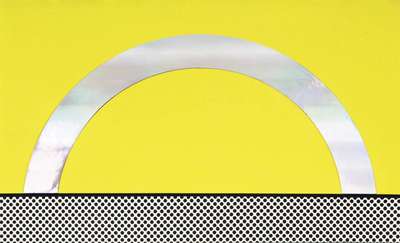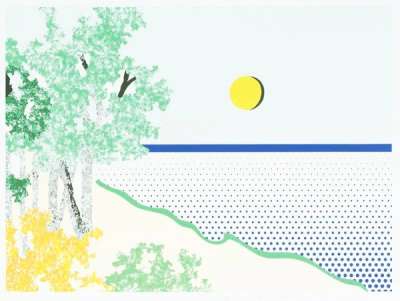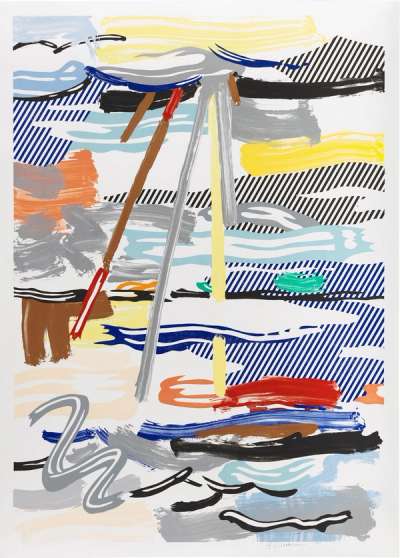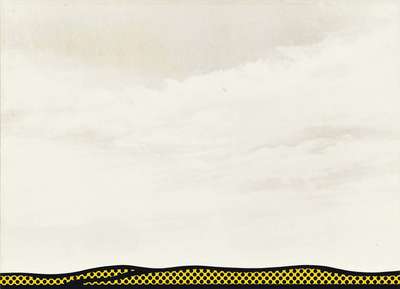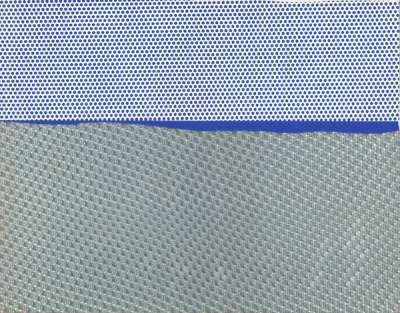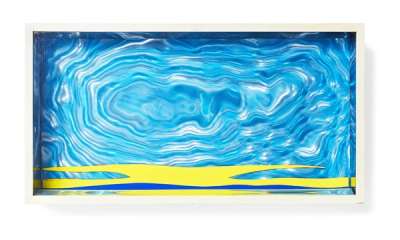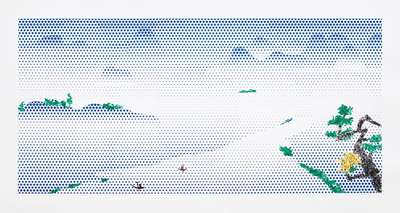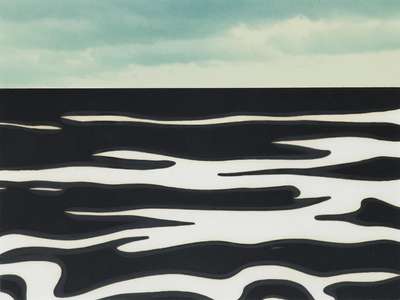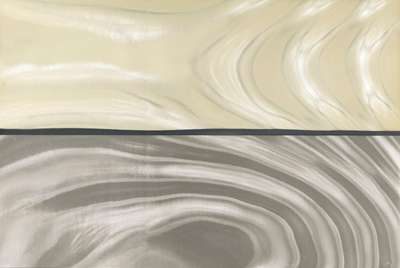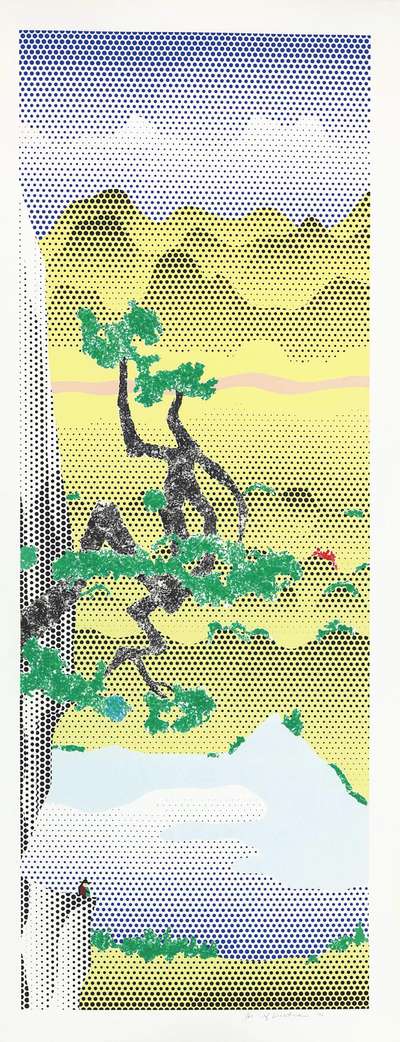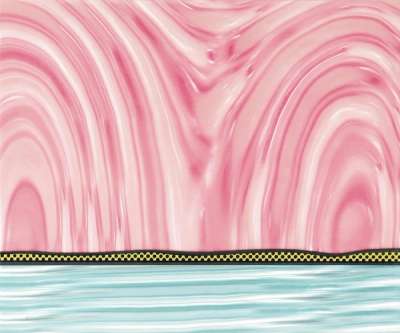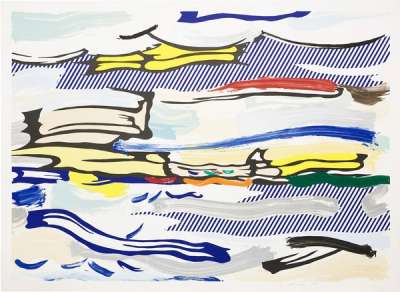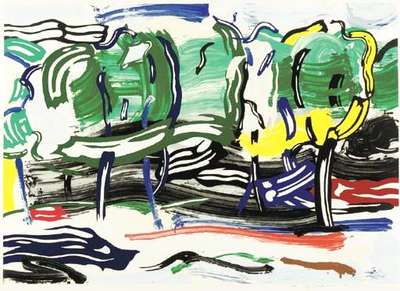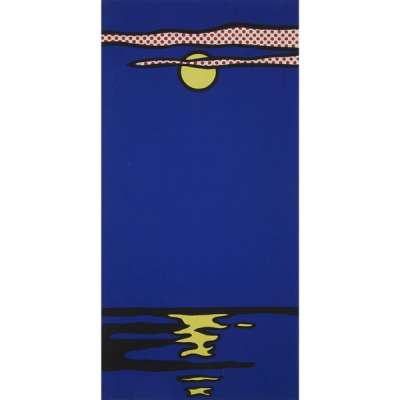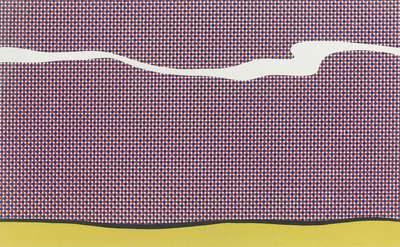Cloud And Sea

Cloud And Sea
Signed Ceramic
Roy Lichtenstein
Price data unavailable
There aren't enough data points on this work for a comprehensive result. Please speak to a specialist by making an enquiry.
76 x 153cm, Edition of 6, Enamel
TradingFloor
Auction Results

Track auction value trend
Meaning & Analysis
Roy Lichtenstein’s Cloud And Sea from 1964 is a pop revision of the landscape genre. This rare signed multiple executed as porcelain enamel on steel belongs to a limited edition of 6.
Cloud And Sea employs Lichtenstein’s bold lines, signature dots, and accentuated colours to capture the dynamic intensity of a natural occurrence. In his pop rendition, the artist reworks the omnipresent motif of the sea, the clouds above and the sun lurking behind. Lichtenstein sprinkles the bright yellow horizon with deep red halftone dots, thereby alluding to the concealed presence of the warming rays. The white fluff of the clouds is reflected on the surface of the navy blue waves below.
In Cloud And Sea, the streaks of dots replace conventional tone, texture, and shading, functioning as a machine-like impression of the pointillist method. Through the use of firm lines and a reduced pattern, Lichtenstein creates a cartoon vista that captures the essential components of nature. As such, the work is the conceptual forerunner of the artist’s illustrative The New Fall of America suite of the 1990s. Additionally, the print also considers modes of representation and seeing, ideas Lichtenstein further explored in his Haystacks and Cathedral series.
Roy Lichtenstein, born in New York, 1923, is a seminal figure in the Pop Art movement, renowned for his comic book and advertisement-inspired artworks. His transformative journey from classical painter to Pop Art pioneer began with his iconic piece, Look Mickey, marking the fusion of painting with pop culture. Lichtenstein’s works, including Whaam!, Drowning Girl, and Crying Girl, blend parody and satire, challenging the boundaries between popular culture and ‘high art’. With over 5,000 pieces to his name, Lichtenstein’s enduring influence resonates in contemporary art, his works celebrated in prestigious institutions worldwide.
